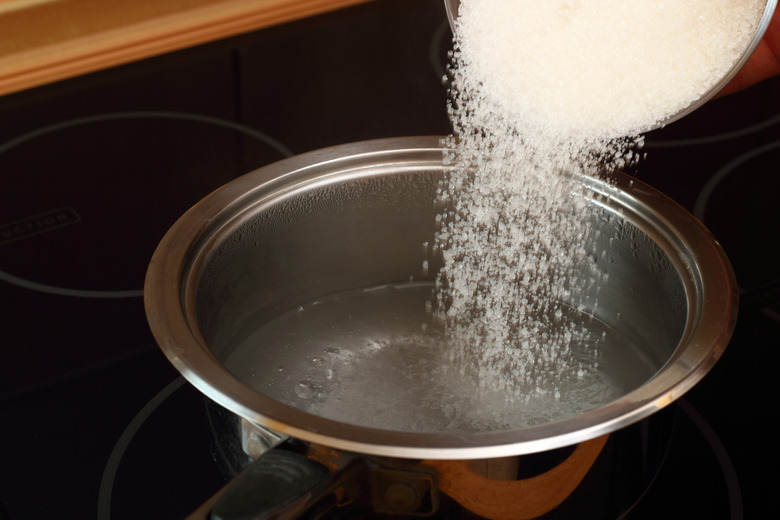What Is The PH Of A Sugar Solution?
Whenever you mix sugar with a liquid, you create a solution, including that cup of tea you enjoy every morning. Adding sugar does not change the pH level of the liquid because sugar itself does not have a pH level. In other words, the pH level of a sugar solution is the same as that of the liquid before the addition of sugar.
The pH of a Solution
The pH of a Solution
The pH level of a solution shows whether it is acidic, alkaline or neutral. Neutral means it is neither acidic nor alkaline. On a scale of 0 to 14, a pH level of 7 is neutral, a pH level lower than 7 means a solution is acidic, and a pH level greater than 7 means a solution is alkaline. Pure or distilled water has a pH level of 7.
Properties of Sugar
Properties of Sugar
What you commonly know as sugar is sucrose, a polar compound made of carbon, hydrogen and oxygen. Sucrose in itself does not have a pH level, because pH is a measure of concentration and not the property of a particular chemical. The same applies to other sugars, such as lactose, fructose and glucose. At room temperature, sugar is highly water-soluble. For example, at 100 degrees Celsius or 212 degrees Fahrenheit, about 500 grams of sugar dissolves in 100 ml of water.
Adding Sugar to Water
Adding Sugar to Water
Adding sugar to water makes the sugar crystals dissolve and creates a solution. However, you cannot dissolve an infinite amount of sugar in a set amount of water. The solution becomes saturated after as much sugar dissolves in the water as possible. Because sugar is a non-ionic compound, it does not dissolve into ions when added to water. Additionally, sugar tends not to release H or OH ions when it dissolves in water, so it does not alter the acidic or alkaline properties of the solution. In other words, sugar cannot materially alter the pH level of a solution, so the pH value of a sugar solution is the same as the pH level of the water without the added sugar. If the water is pure or distilled, the pH level will be 7. However, the "safe" pH level of drinking water ranges from 6 to 8.5.
Adding Sugar to Other Liquids
Adding Sugar to Other Liquids
Adding sugar to liquids besides water, such as lemonade, fruit juice or tea, will make them taste sweeter, but this has nothing to do with the pH level. Adding sugar will not affect the pH level of the liquid because sugar simply does not have the chemical capacity to do this. This is an important distinction to make because many people think sugar is acidic. This is not strictly true, at least not in relation to the pH scale. However, sugar produces lactic acid when its glycoproteins attract bacteria. For example, when you drink sugary drinks, and the glycoproteins stick to your teeth. The bacteria feed on fructose and produce lactic acid, which may contribute to tooth decay.
Cite This Article
MLA
Gillespie, Claire. "What Is The PH Of A Sugar Solution?" sciencing.com, https://www.sciencing.com/ph-sugar-solution-6077753/. 27 April 2018.
APA
Gillespie, Claire. (2018, April 27). What Is The PH Of A Sugar Solution?. sciencing.com. Retrieved from https://www.sciencing.com/ph-sugar-solution-6077753/
Chicago
Gillespie, Claire. What Is The PH Of A Sugar Solution? last modified March 24, 2022. https://www.sciencing.com/ph-sugar-solution-6077753/
